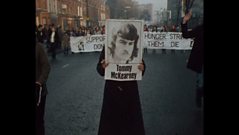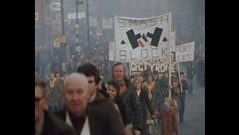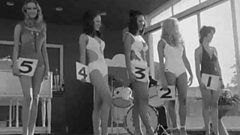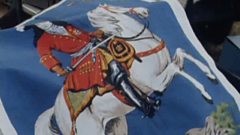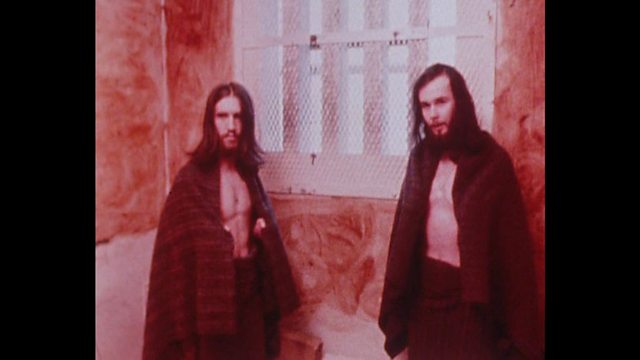
Background to the republican hunger strike in the Maze
����ý correspondent Nicholas Woolley explains the background to the 1980 republican hunger strike at the Maze prison in Northern Ireland using the case of hunger striker Tommy McKearney, convicted of killing an Ulster Defence Regiment reservist.
Nicholas Woolley reports on the background to the 1980 republican hunger strike at the Maze prison in Northern Ireland. The hunger strike involving seven men, Leo Green, Raymond McCartney, Sean McKenna, Tommy McKearney, John Nixon, Tom McFeeley and Brendan Hughes, began on 27th October 1980.
Woolley links one of the hunger strikers, Tommy McKearney, to the killing of Stanley Adams who held two part time jobs: postman and UDR (Ulster Defence Regiment) soldier. He was shot dead in 1976 when he delivered a ‘decoy’ letter to an isolated farm.
The following year McKearney was arrested and charged. He claimed he was beaten up at Castlereagh RUC station to make him confess. A prison doctor supported his claim which was then taken up by Amnesty International in a report that led indirectly to a reform of interrogation procedures. He was convicted by a judge sitting alone in a special court (known as a Diplock court) who deemed his confession admissible.
Woolley then explains that at the Maze, two prison regimes exist side by side. In the old compounds, prisoners convicted after 1972 enjoy Special Category status while those housed in the new H Blocks are treated as ordinary criminals because they were convicted after March 1976 when Secretary of State Merlyn Rees abolished Special Category status. This change in policy triggered republican protests. First a ‘blanket’ protest (1976) then a ‘no-wash’ protest which escalated to the ‘dirty protest’ (1978) and finally the hunger strikes in October 1980.
Duration:
This clip is from
More clips from 09/12/1980
-
![]()
The republican hunger strikers' five demands
Duration: 01:47
-
![]()
Republican hunger strike begins in the Maze
Duration: 19:28
More clips from Nationwide
-
![]()
A Passion for Steam Trains—23/09/1975
Duration: 10:35
-
![]()
Eddie Braben on Liverpool—10/09/1979
Duration: 13:44
-
![]()
Southend Holiday—24/08/1973
Duration: 10:25
-
![]()
Scarva—10/07/1981
Duration: 08:28

